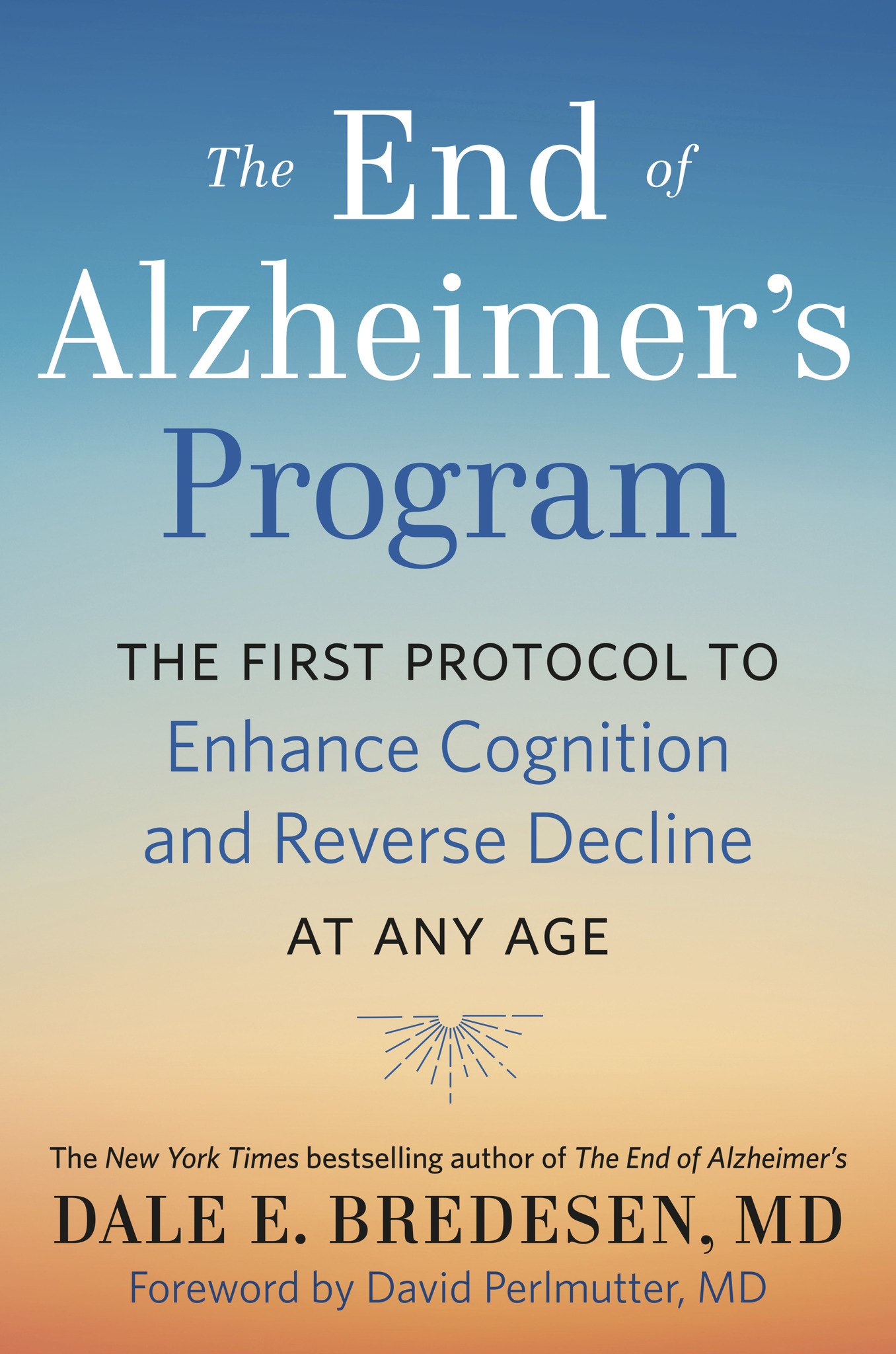Virtually all of us are at some risk for Alzheimer’s, and indeed, this is one of the reasons that it is such a common disease. With the many toxins to which we are exposed, the processed foods, the high-carbohydrate and unhealthy fat content of the SAD (standard American diet), the leaky gut so many of us have, and the lipid abnormalities (“cholesterol,” although the cholesterol itself is actually not the problem), most of us have a significant risk for Alzheimer’s disease. The good news is that nearly all of us can avoid or reverse the problem, now that we understand the contributors. To do that, we simply need to address the underlying drivers of the disease process—it’s like patching thirty-six holes in your roof —the same ones that we profile in the subtyping described above, and the earlier we do this, the easier it is to achieve success. The overall goal of treatment can be summarized as removal, resilience, and rebuilding: removal of the exposures contributing to cognitive decline, resilience resulting from optimal health support, and rebuilding of the neural network. Here’s how we do that:
First, we want to address insulin resistance—in other words, we want to become insulin sensitive. Insulin is a hormone made in your pancreas, and it has several different jobs. It is a major player in metabolism—it binds to its receptor, which induces glucose entry and fat storage, thus reducing the glucose in your blood. However, it is also a key growth factor for neurons, so losing sensitivity is a very significant problem.
Virtually everyone with Alzheimer’s has indeed lost sensitivity to insulin and become resistant, at least in the brain. Eighty million Americans are insulin resistant. When your insulin has been elevated for years—just as it has for most of us who have eaten a standard American diet—the molecular composition of the signaling pathway actually changes, its phosphorylation pattern modified. The insulin resistant cells no longer respond appropriately to normal levels of insulin, which means that your neurons no longer have the support needed for survival and interaction. Restoring insulin sensitivity can be achieved by combining the KetoFLEX 12/3 diet and lifestyle, optimizing key nutrients such as zinc (which is involved in multiple steps of insulin secretion and effect), exercising regularly, reducing stress, treating sleep apnea if present, and if needed, taking a supplement such as berberine, cinnamon, alpha-lipoic acid, or chromium picolinate. Virtually all of us can become insulin sensitive using this approach.
In order to give you the best results for your insulin sensitivity and glucose levels, there is a convenient new method that helps to optimize the various steps you are doing. It is called continuous glucose monitoring (CGM), and you can do this with FreeStyle Libre, a wearable patch for your upper arm that monitors your glucose continuously for two weeks, so that you can see what may be spiking your glucose and what may be leading to glucose that is too low (hypoglycemia). Both spikes and dips may contribute to cognitive decline, so smoothing those out is an effective approach.
Second, we want to get into ketosis—in other words, burn fat. Alzheimer’s is associated with reduced ability to utilize glucose in the brain, in an L pattern, affecting the temporal lobe (running horizontally along your temple) and the parietal lobe (running vertically up behind your ear). For many, this decreased glucose utilization, which is driven by the insulin resistance described immediately above, is ongoing for more than a decade before cognitive decline. Ketones can bridge the energy gap, and have been shown to improve cognitive decline.When you combine the ability to utilize ketones with the insulin sensitivity mentioned immediately above, you have a powerful weapon against dementia—metabolic flexibility, that is, the ability to burn either ketones or glucose.
Getting into ketosis is straightforward in theory, but not as easy in practice, since the insulin resistance that is so prevalent in Alzheimer’s and pre-Alzheimer’s actually inhibits fat metabolism and thus prevents our production of the very ketones we need (as well as perpetuating sugar craving, thus creating a metabolic dementia cycle). In order to terminate the cycle, we recommend a three-pronged approach: a plant-rich, fiber-rich, low-carbohydrate diet, high in healthy fats; fasting overnight for at least 12 hours; and exercising regularly. Your body will respond by breaking down fats, turning them into ketones. Many people find that just getting into ketosis gives them more mental clarity, improves their memory, enhances alert-ness and focus, and gives them more energy.
Third, we want to optimize all nutrient, hormone, and trophic (growth factor) support. In other words, we want to create resilience, optimize our immune systems, support our mitochondria, and begin to rebuild our brains’ synaptic networks.
No matter where we are in the development of cognitive decline, we want to optimize the nutrients, hormones, and trophic factors (growth factors) supporting the brain. In addition to nutrients, we want to make sure to optimize our hormone levels, since these are critical for making and maintaining synapses. For many of us, optimal nutrition and lifestyle will lead to optimal hormone production, but for others of us, we’ll want to support our brain function by achieving the most effective levels of thyroid, pregnenolone, estradiol, progesterone, testosterone, DHEA (dehydroepiandrosterone, a stress hormone), and cortisol.
Fourth, we want to resolve and prevent inflammation. The amyloid that we associate with Alzheimer’s disease is actually a part of the inflammatory response; as noted earlier, it is protective, killing pathogens such as bacteria and fungi. So as long as there is ongoing inflammation, you can expect ongoing amyloid production and Alzheimer’s. What we want to do, therefore, is to remove the cause of the inflammation, resolve the inflammation, then prevent future inflammation.
The most common cause of chronic inflammation is leaky gut (increased permeability of the small intestine to bacteria, bacterial fragments, and food particles), which can be caused by stress, sugar, alcohol, processed foods, aspirin and related anti-inflammatories (ibuprofen, etc.), soft drinks, PPIs (proton-pump inhibitors used to treat acid reflux, or heartburn), and other damaging agents, so we want to know our gut status.
Fifth, we want to treat chronic pathogens. In other words, if you have a chronic undiagnosed infection, it is likely to be contributing to cognitive decline, so let’s identify it and target it (and similarly, anyone who has begun to improve can expect a setback when an infection occurs, such as the flu or a urinary tract infection). The old-fashioned view of infections is that you are either infected—“sick”—or uninfected—“well.” However, it has turned out to be much more complicated than that. We are all living, every day, with over a thousand different species of microbes! In our mouths, large intestines, and sinuses; on our skin; and somewhat unbelievably, apparently even in our brains! The brains of patients with Alzheimer’s disease may harbor bacteria, viruses, spirochetes (spiral bacteria, such as those causing Lyme disease), fungi, or parasites. It is the protective response to these that causes the very changes we call Alzheimer’s disease, so we want to target such agents so that our brains will not have to produce the protective amyloid, since that same protective agent leads to the downsizing of our neural connections that causes our cognitive decline.
Now that we understand that we live with microbes every day—they are part of us, which gives a whole new meaning to the term I!—it becomes clear that optimal health is not simply about getting rid of a bad germ. Instead, it is about getting the right balance of germs. The good germs actually help keep the bad germs at bay (as well as working with you to optimize your metabolism), so you must be very careful about taking antibiotics and wiping out both good and bad indiscriminately. This is why it is so important to have a healthy gut microbiome, and the same goes for your mouth, sinuses, and skin.
Sixth, we want to identify and remove toxins—metals like mercury, organics like toluene and benzene, and biotoxins like mold toxins (mycotoxins). For years, we have tested for and tried to avoid carcinogens in our food, health products, and other products to which we are exposed, and thanks to the Ames test, we have largely been able to do this. But what about dementogens? These are not listed on any labels of any products we buy. However, many different chemicals can contribute to cognitive decline, either directly or indirectly. In fact, it is relatively common for multiple chemicals to conspire to compromise cognition.
Finally, we want to rule out sleep apnea, and optimize sleep. I am not sure that I can state this strongly enough: everyone who has cognitive decline or is concerned about risk for cognitive decline should be checked for their oxygen at night. This is relatively easy to do—your doctor can lend you, or you can purchase, an oximeter, which you simply wear on your finger overnight, or you can have a sleep study. Both of these will tell you whether your oxygen levels are dropping dangerously low while you sleep. Beyond sleep apnea and nocturnal desaturation events, optimizing sleep preparation, timing, and quality is critical.
You can now see, with all of the many potential contributors to the cognitive decline of Alzheimer’s disease—from insulin resistance to the many different pathogens and toxins to the lack of support from nutrients, hormones, and trophic factors to leaky gut to sleep apnea to high stress and more—why it is so important to identify these various contributing factors and address them with a personalized, targeted protocol. In this way, we are treating the factors that actually cause our cognitive decline instead of allowing the contributors to continue to degenerate our brains while we blindly take a drug that does not alter the underlying cause of the decline. In fact, future drug trials may be more successful if performed in combination with a personalized program that addresses the disease mechanisms.



